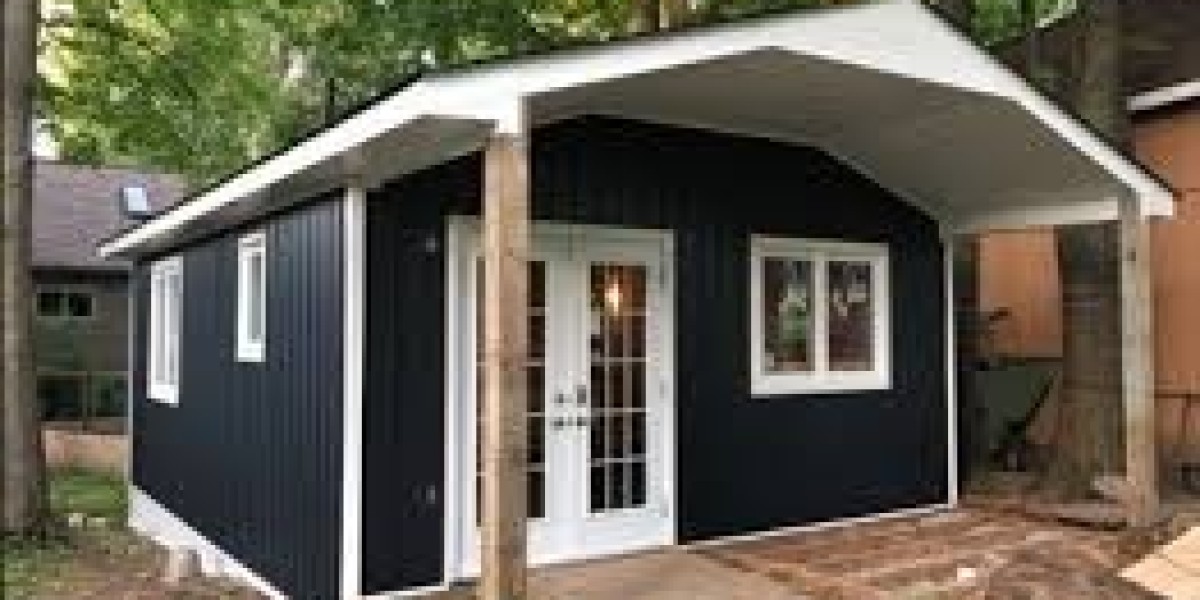A roof is one of the most critical elements of any building. It protects the structure from the elements, enhances energy efficiency, and plays a significant role in the overall aesthetic appeal of a home. Choosing the right roofing materials and ensuring proper installation and maintenance are key to ensuring that your roof lasts as long as possible. In this article, we'll explore the various roofing materials, the installation process, and essential tips for maintaining and prolonging the life of your roof.
The Importance of Roofing
The roof serves as the primary barrier between a home and the outside world. It shields the interior from rain, snow, wind, sun, and other weather conditions, ensuring that the occupants remain safe and comfortable. A well-constructed roof not only provides structural support but also helps in regulating indoor temperature, contributing to the home's energy efficiency. Additionally, a well-designed roof can significantly enhance the curb appeal of a house, increasing its overall value.
Types of Roofing Materials
There are several roofing materials available, each offering distinct advantages in terms of durability, cost, appearance, and environmental impact. The right material for your roof will depend on various factors, including your budget, climate, and the style of your home. Below are some of the most common types of roofing materials:
Asphalt Shingles: Asphalt shingles are by far the most popular roofing material in North America, primarily due to their affordability and ease of installation. Made from a fiberglass base coated with asphalt and topped with mineral granules, these shingles provide reliable protection and come in a wide range of colors and styles. Asphalt shingles are relatively lightweight and can last between 20 to 30 years with proper maintenance. They are also available in various grades, with premium shingles offering longer lifespans and better resistance to wind and hail.
Metal Roofing: Metal roofing is becoming increasingly popular for its durability and long lifespan. It can be made from materials like aluminum, steel, copper, or zinc, and it is often available in panels or shingles. Metal roofs are resistant to fire, wind, and water damage, making them a great option for homes in areas prone to extreme weather. They are also highly energy-efficient, reflecting solar heat and reducing cooling costs in warmer climates. Metal roofs can last up to 50 years or more with proper care, but they do come with a higher upfront cost compared to asphalt shingles.
Clay and Concrete Tiles: Clay and concrete tiles are known for their distinctive, elegant appearance and their ability to withstand harsh weather conditions. These tiles are extremely durable, often lasting 50 years or more, and are resistant to fire, rot, and insect damage. However, they are also quite heavy and may require additional structural support. Clay tiles are popular in Mediterranean and Spanish-style homes, while concrete tiles can mimic the look of wood, slate, or stone. Although expensive, their longevity and aesthetic appeal make them a worthwhile investment for many homeowners.
Wood Shingles and Shakes: Wood shingles and shakes provide a natural, rustic appearance that blends well with traditional and cottage-style homes. Shingles are machine-cut for a smooth, uniform look, while shakes are hand-split, giving them a more rugged texture. Cedar and redwood are the most commonly used types of wood for roofing, as they are naturally resistant to moisture and insects. However, wood roofing requires more maintenance than other materials and is vulnerable to fire unless treated with a fire-resistant coating. With proper care, wood roofs can last between 25 to 30 years.
Slate Roofing: Slate is a premium roofing material known for its unparalleled durability, beauty, and longevity. A natural stone, slate is highly resistant to fire, water, and temperature fluctuations. It is also environmentally friendly, as it is a natural product that can be reused or recycled. Slate roofs can last 75 to 100 years or more, making them one of the longest-lasting roofing materials available. However, slate is very heavy and expensive, and installation requires specialized skills. Despite the high cost, slate is an excellent choice for homeowners seeking a roof that will last a lifetime.
Synthetic Roofing: Synthetic roofing materials, such as rubber, plastic, or polymer-based products, are designed to mimic the look of natural materials like slate, wood, or clay, but at a lower cost and weight. These materials are typically durable, lightweight, and easy to install. They also offer good resistance to UV rays, moisture, and impact. Synthetic roofing is often more affordable than natural materials, and advancements in technology have made them a popular choice for homeowners seeking a balance between aesthetics and cost.
The Roofing Installation Process
Proper installation is crucial to the performance and longevity of any roof. A poorly installed roof can lead to leaks, structural damage, and a host of other problems down the line. Here’s a general overview of the roofing installation process:
Inspection and Preparation: Before installing a new roof, the existing roof must be inspected to identify any damage to the underlying structure. Any rotting wood or structural issues should be repaired before proceeding. The old roofing materials are then removed, and the roof deck is cleaned and prepped.
Installing the Underlayment: A water-resistant or waterproof underlayment is installed on top of the roof deck to provide an extra layer of protection against moisture. This underlayment is crucial for preventing leaks, especially in areas prone to heavy rain or snow.
Drip Edge and Flashing: A drip edge is installed along the edges of the roof to help guide water away from the fascia and into the gutters. Flashing is installed around roof penetrations such as chimneys, vents, and skylights to prevent water from seeping into the home.
Installing the Roofing Material: Once the underlayment and flashing are in place, the roofing material is installed according to the manufacturer’s specifications. Asphalt shingles are nailed into place, while materials like metal or slate may require screws or special fasteners. Care is taken to ensure that each piece overlaps properly to create a watertight seal.
Final Inspection and Cleanup: After installation, the roof is inspected to ensure that everything is secure and properly aligned. The worksite is then cleaned up, with debris and old roofing materials removed.
Roof Maintenance Tips
Regular maintenance is key to prolonging the life of your roof and preventing costly repairs. Here are some tips to keep your roof in good condition:
- Inspect Regularly: Conduct a visual inspection of your roof at least twice a year, especially after storms. Look for signs of damage such as missing or curled shingles, cracks, or water stains inside the home.
- Clean the Gutters: Clogged gutters can lead to water backup and roof damage. Keep gutters clean and ensure that water is flowing properly.
- Trim Overhanging Branches: Trees that hang over your roof can drop leaves, branches, and debris that can clog gutters or damage the roof surface.
- Address Issues Promptly: If you notice any damage, leaks, or signs of wear, address the problem immediately to prevent further damage.
Conclusion
Roofing is a critical component of any home, providing protection, insulation, and aesthetic appeal. With various materials available, including asphalt, metal, slate, and wood, homeowners can choose the roofing solution that best suits their needs, climate, and budget. Proper installation and maintenance are essential to ensuring that your roof performs well and lasts for many years. By investing in quality roofing materials and following good maintenance practices, you can protect your home and increase its value for decades to come.









